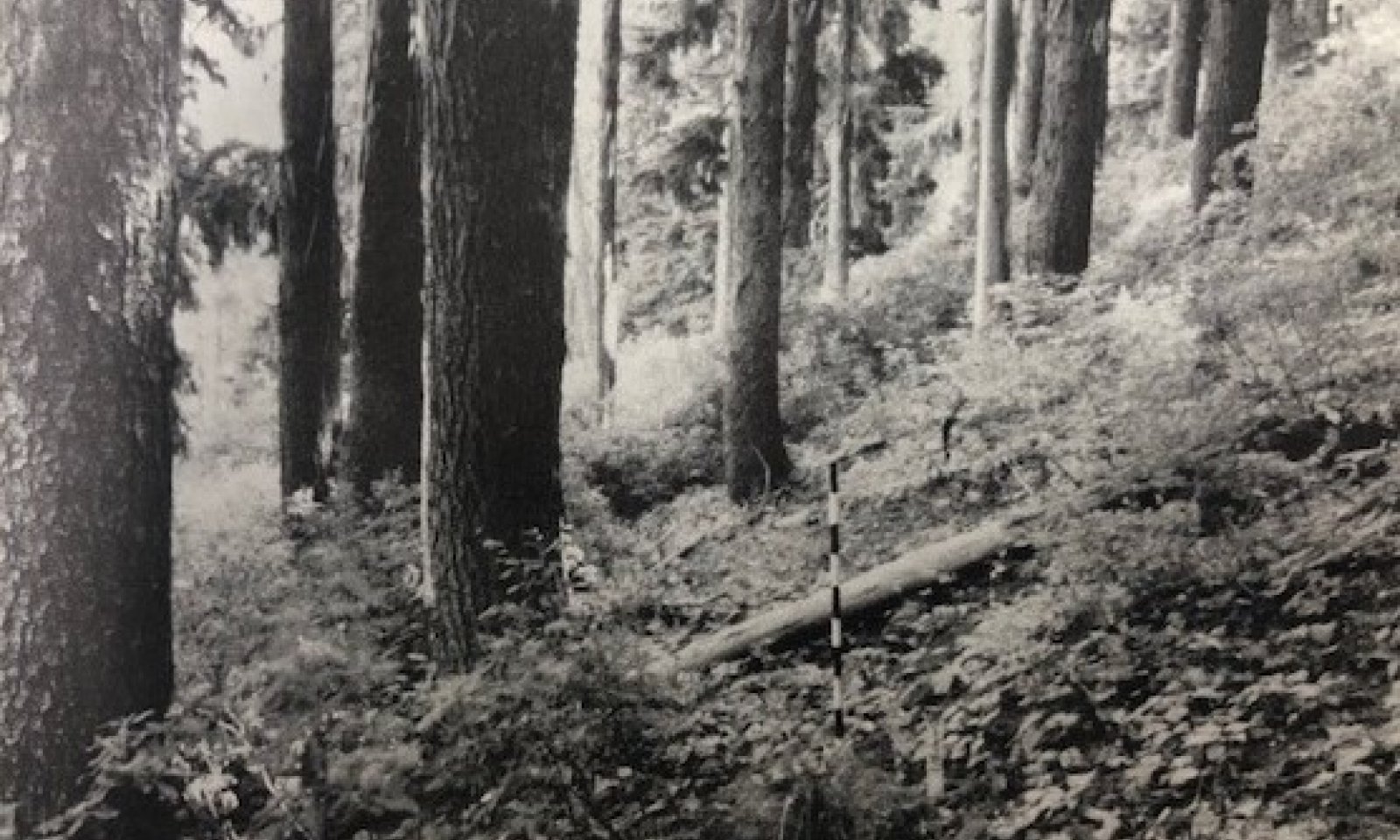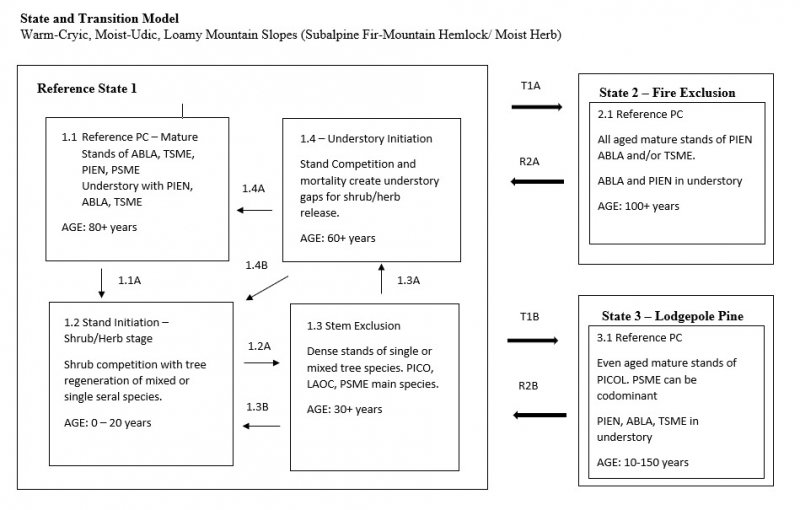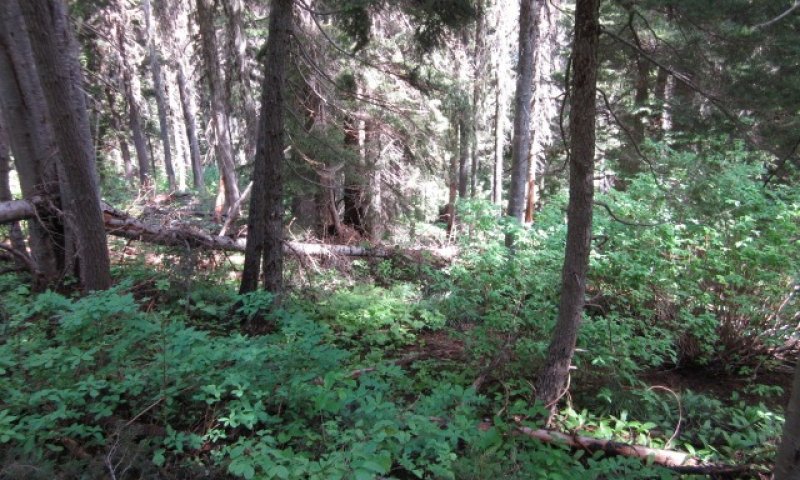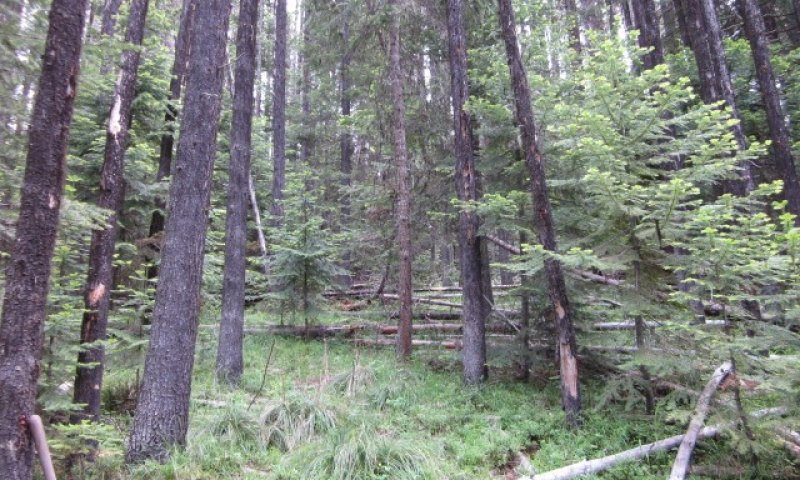Ecological dynamics
Ecological Dynamics of the Site
Forests in this ESD have substantial herbaceous and shrub cover, and often have a closed canopy. Climax stands are dominated by subalpine fir and mountain hemlock. Large spruces persist for centuries in old-growth stands. A variety of species, including climax species and spruce, occur in early succession. Seral lodgepole pine can dominate in several habitat types, but it dies out 120 to 160 years after stand establishment (Cooper and others 1991). Western larch is common on sites with good drainage. Douglas-fir, grand fir, and western white pine occur on moderate sites, but rarely dominate. Whitebark pine intergrades with lodgepole pine at high elevations.
Most stands regenerate readily after fire. Species composition varies because of variation in drainage, moisture and temperature regimes, seed source, and fire history. Patchy, mixed-severity burns further complicate structural development and species composition. Where severe fires were less than about 160 years apart in presettlement times, lodgepole pine may dominate seral stands. Lodgepole pine may also codominate with Engelmann spruce, or may occur in combination with other seral species and climax species. Cold temperatures, wet soils, and luxuriant undergrowth favor early dominance by Engelmann spruce and climax species, especially if long fire-free intervals have excluded lodgepole pine. Stands that were drier before fire follow this pathway if water tables rise appreciably after canopy removal. (from Smith and Fischer, 1997, pp. 75-78)
State 1
Reference
Moist sites have substantial herbaceous and shrub cover, and often have a closed canopy. Climax stands are dominated by subalpine fir and mountain hemlock. Large spruces persist for centuries in old-growth stands. A variety of species, including climax species and spruce, occur in early succession. Seral lodgepole pine can dominate in several habitat types, but it dies out 120 to 160 years after stand establishment. Western larch is common on sites with good drainage.
Community 1.1
Reference
Overstory dominated by subalpine fir, Engelmann spruce and/or mountain hemlock. Where fire or site conditions have kept stands more open western larch, Douglas-fir, and lodgepole pine may be present. Understory will have subalpine fir, mountain hemlock, and Engelmann spruce where ground fires have been absent. Understory dominated by mesic forbs such as queencup beadlily, coolwort foamflower, Idaho goldthread, rattlesnake plantain and Pacific trillium.
Dominant plant species
-
subalpine fir (Abies lasiocarpa), tree
-
mountain hemlock (Tsuga mertensiana), tree
-
Engelmann spruce (Picea engelmannii), tree
-
western larch (Larix occidentalis), tree
-
Rocky Mountain Douglas-fir (Pseudotsuga menziesii var. glauca), tree
-
lodgepole pine (Pinus contorta var. latifolia), tree
-
grand fir (Abies grandis), tree
-
thinleaf huckleberry (Vaccinium membranaceum), shrub
-
rusty menziesia (Menziesia ferruginea), shrub
-
Sitka alder (Alnus viridis ssp. sinuata), shrub
-
Utah honeysuckle (Lonicera utahensis), shrub
-
common beargrass (Xerophyllum tenax), other herbaceous
-
darkwoods violet (Viola orbiculata), other herbaceous
-
bride's bonnet (Clintonia uniflora), other herbaceous
-
western meadow-rue (Thalictrum occidentale), other herbaceous
-
Piper's anemone (Anemone piperi), other herbaceous
-
sidebells wintergreen (Orthilia secunda), other herbaceous
-
western rattlesnake plantain (Goodyera oblongifolia), other herbaceous
-
Idaho goldthread (Coptis occidentalis), other herbaceous
-
fragrant bedstraw (Galium triflorum), other herbaceous
-
Pacific trillium (Trillium ovatum ssp. ovatum), other herbaceous
Community 1.2
Stand Initiation, Shrub/Herb Phase
Stand replacing fires convert site back to shrub/herb phase with tree regeneration dependent on seed source and fire severity. Dense stands of lodgepole pine can be present if sufficient seed was available in the ground. Western larch can also establish quickly with sufficient seed source and bare soil. Mixed species stand could develop with all seral species present including Douglas-fir, larch, and lodgepole. Shrubs will re-sprout and compete with tree seedlings.
Community 1.3
Stem Exclusion
Dense stands of mixed or single tree species will develop and start to compete for space and nutrients.
Community 1.4
Understory Re-initiation
As stands mature mortality gaps occur from stand competition and insects create areas for understory release. Shrubs and herbs increase along with tree regeneration.
Pathway 1.1A
Community 1.1 to 1.2
Stand replacing fire moving site back to the shrub/herb phase.
Pathway 1.2A
Community 1.2 to 1.3
Time. Mixed or single seral species tree regeneration move out of the seedling/sapling phase into dense pole stands.
Pathway 1.3B
Community 1.3 to 1.2
Stand replacing fire back to the shrub/herb phase.
Pathway 1.3A
Community 1.3 to 1.4
Stands move out of the pole stage through competition opening up canopy gaps for understory shrubs and herbs to increase. Tree regeneration will include shade tolerant subalpine fir and Engelmann spruce.
Pathway 1.4A
Community 1.4 to 1.1
Stands mature into mixed stand of seral species with some subalpine fir, mountain hemlock or Engelmann spruce in overstory and understory.
Pathway 1.4B
Community 1.4 to 1.2
Stand replacing fire converts site back to the shrub/herb phase
State 2
Fire Exclusion
Lack of fire allows shade tolerant species (subalpine fir, mountain hemlock) to dominate site. Scattered large individuals of Engelmann spruce may persist in stand. Shrubs include fools huckleberry, and thinleaf huckleberry. Forbs include queencup beadlily, rattlesnake plantain, western meadowrue and beargrass. Shrubs such as fools huckleberry and thinleaf huckleberry will increase in absence of fire.
State 3
Lodgepole Pine
Lodgepole seedlings dominate stand soon after fire. When the prefire stand supported pines with serotinous cones, lodgepole pine seedlings often germinate in profusion the year after fire, with densities exceeding 10,000 per acre. When the prefire stand supported pines bearing mainly nonserotinous cones, restocking is slower. Douglas-fir regeneration is common on relatively warm sites. Engelmann spruce and subalpine fir also occur, but competition and shade from lodgepole seedlings suppress these species. Where fire return frequency is ~150 years PICO has potential to dominate reproduction and stand composition through several fire cycles.
Transition T1A
State 1 to 2
Fire exclusion for long time periods will lead to an overstory of subalpine fir or mountain hemlock and Engelmann spruce with both species also in the understory. On the moister sites Engelmann spruce will be more prominent.
Transition T1B
State 1 to 3
Stand replacing fir recurs over an interval <150 years. PICO is present as seed source in stand and successfully dominates regeneration.
Restoration pathway R2A
State 2 to 1
Overstory management and prescribed fire to increase seral species establishment.
Restoration pathway R3A
State 3 to 1
Overstory management and fire suppression to increase species diversity





